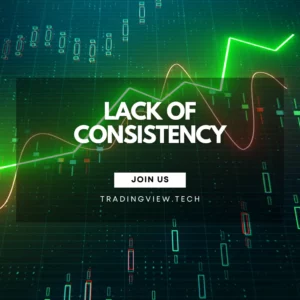In the high-stakes world of trading, it’s easy to become fixated on finding the perfect entry point, identifying the next big market mover, or developing the ultimate technical indicator. However, many traders—especially beginners—quickly discover that even the most accurate trading strategy can’t compensate for poor money management. In fact, a lack of capital discipline is one of the primary reasons why traders lose money and eventually exit the market altogether.
Poor money management manifests in various forms: oversized positions, excessive leverage, a lack of diversification, or simply failing to define how much capital to risk per trade. These missteps often lead to emotional decision-making and, in worst-case scenarios, the complete erosion of a trading account after just a few bad trades. The irony is that a trader can be right more often than wrong and still lose money if losses are not properly controlled.
This article explores how and why money management must be treated as the foundation of a sustainable trading career. We’ll break down the critical elements of capital protection—from understanding position sizing to recognizing the dangers of overleveraging—and offer practical solutions that traders at all levels can implement to stay in the game longer and trade more effectively.
Understanding the Importance of Money Management
Money management is not just a technical aspect of trading—it is the bedrock upon which long-term trading success is built. Many traders mistakenly believe that finding the perfect trading strategy is the key to profitability. While strategy is undoubtedly important, it is only one piece of the puzzle. In reality, how a trader manages their capital—how much they risk on each trade, how they respond to losses, and how they protect their gains—is often a stronger determinant of their success than their strategy alone.
Consider two traders using the exact same system. One consistently risks a small percentage of their account per trade, maintains strict stop-losses, and adapts their position sizes based on volatility and account size. The other trades impulsively, risking a large portion of their capital in hopes of a big win. Over time, the disciplined trader will likely see steady growth and withstand market fluctuations. The impulsive trader, even if right more often than not, could lose everything after just a few consecutive losses.
Proper money management is what separates gambling from professional trading. It ensures that no single trade or losing streak can wipe out your account. It allows for long-term participation in the market, giving strategies the time they need to work and compounding gains slowly and steadily. Most importantly, money management puts the trader in control, reducing emotional decisions and the temptation to chase losses or overtrade.
The Dangers of Overleveraging and Oversizing
Overleveraging and oversizing are two of the most dangerous habits in trading, especially common among new traders lured by the promise of quick, exponential gains. Leverage allows traders to control a larger position than their account balance would normally permit, amplifying both potential gains and losses. While this can seem appealing in a winning trade, the flip side is devastating when the market turns against you.
Using too much leverage essentially means you’re borrowing capital to trade beyond your means. It significantly reduces the margin for error and makes accounts highly vulnerable to even small market fluctuations. A 2% adverse move in a highly leveraged position can wipe out 20% or more of your account. If a trader continues this behavior, a full margin call—where the broker forcibly closes positions to prevent further loss—can follow, resulting in catastrophic financial damage.
Oversizing refers to placing trades that are too large relative to the size of your trading account. When a trader allocates too much capital to a single trade, they are effectively putting their entire trading future in the hands of one market movement. This violates the core principle of risk distribution. Even the most high-probability setups can fail due to unforeseen events—news, volatility spikes, or sudden reversals. If you’re overexposed, one losing trade can set you back weeks, months, or even blow your account entirely.
The trading landscape is filled with stories of individuals who had the right ideas but failed to survive because they lacked risk control. Overleveraging and oversizing are not signs of confidence—they’re signs of poor discipline. Sustainable trading requires acknowledging that no trade is guaranteed and that protecting capital must take precedence over chasing profit. Leverage is a tool, not a weapon; when misused, it turns trading from a calculated endeavor into a dangerous gamble.
Position Sizing Strategies
Position sizing is one of the most vital aspects of money management in trading. It determines how much capital a trader allocates to a particular trade, and it’s the primary tool for managing risk on a per-trade basis. Even with a winning strategy, poor position sizing can turn success into failure. Conversely, correct position sizing ensures that no single trade has the power to devastate an account, giving traders the ability to survive losing streaks and preserve capital for future opportunities.
One of the most widely used and recommended approaches is the 1% or 2% risk rule. This rule suggests that a trader should never risk more than 1% to 2% of their total account equity on a single trade. For example, if a trader has an account balance of $10,000, risking 1% means that the maximum amount they should lose on any one trade is $100. This cap includes not just the amount invested, but the total loss if the trade goes against them and hits the stop-loss.
To implement the 1% rule effectively, traders must determine:
- Their total account size
- The percentage they’re willing to risk (e.g., 1%)
- The distance between the entry price and the stop-loss (in pips or dollars)
- Based on that distance, calculate how many units, lots, or shares can be bought or sold without exceeding the risk cap.
This mathematical and methodical approach removes emotion from the decision-making process. It creates a protective barrier against overconfidence, especially after a few wins, and against panic during a losing streak.
There are also more advanced position sizing models, like:
- Fixed Fractional – risks a fixed percentage of account equity per trade (like the 1% rule).
- Fixed Ratio – adjusts the position size based on the growth of account equity, providing dynamic scaling.
- Kelly Criterion – a more aggressive model that calculates optimal bet size based on win probability and reward-to-risk ratio, but it’s risky for volatile markets and often not recommended for newer traders.
Position sizing also factors in market volatility. For instance, using tools like the Average True Range (ATR), traders can size positions more conservatively in high-volatility environments and slightly larger in stable markets while still keeping overall risk consistent.
Ultimately, good position sizing provides two key benefits: capital protection and psychological control. When you know the maximum you can lose on a trade is well within your tolerance, you’re far less likely to panic, move your stop-loss irrationally, or make revenge trades to quickly “win back” losses. It brings structure to your strategy and allows you to think like a risk manager first and a trader second—an essential mindset for long-term success.
Risk-to-Reward Ratios and Trade Planning
Another cornerstone of disciplined trading is the consistent application of risk-to-reward ratios (RRR) in trade planning. This ratio represents the potential profit of a trade relative to the amount of capital at risk. It is a simple but powerful concept that separates professional trading from mere speculation.
A typical minimum RRR used by many traders is 1:2—this means for every $1 risked, the trader seeks at least $2 in potential profit. Higher ratios like 1:3 or even 1:5 are ideal when achievable, as they allow a trader to be wrong more often than right and still end up profitable. For example, if a trader consistently follows a 1:3 ratio, they only need to win 25% of their trades to break even.
Let’s compare two trade setups to demonstrate this concept:
- Trade A – Good RRR Setup:
- Entry Price: $100
- Stop-Loss: $95 (Risk = $5)
- Take-Profit: $115 (Reward = $15)
- Risk-to-Reward Ratio: 1:3
- Entry Price: $100
- Trade B – Poor RRR Setup:
- Entry Price: $100
- Stop-Loss: $98 (Risk = $2)
- Take-Profit: $102 (Reward = $2)
- Risk-to-Reward Ratio: 1:1
- Entry Price: $100
In Trade A, the potential reward is three times the risk. Even if the trader loses two trades and wins one, they still come out ahead. In Trade B, the reward is equal to the risk, meaning the trader must be right more than 50% of the time just to break even—a much more demanding threshold.
Incorporating RRR into trade planning also forces traders to define their trades in advance: entry point, stop-loss, and take-profit. This pre-planning helps avoid impulsive decisions and emotional exits, especially when the market moves quickly. It encourages a mechanical, rule-based approach rather than reacting based on hope or fear.
Additionally, evaluating RRR before entering a trade provides a helpful filter. If a trade setup offers only a 1:1 ratio—or worse—many seasoned traders will pass on it altogether, regardless of how “good” the technical setup looks. They understand that the edge in trading isn’t just about being right—it’s about making more when you’re right than you lose when you’re wrong.
To maintain discipline, many traders use risk-reward calculators or trading journal software that tracks the RRR of their trades over time. This helps them identify patterns in their performance and fine-tune their strategies.
Ultimately, respecting risk-to-reward ratios is not just about maximizing profits—it’s about ensuring that your trading remains sustainable and mathematically viable over the long haul. It’s a core part of responsible trade planning and a critical habit for anyone aiming to build a career in trading, not just a lucky streak.
Diversification and Exposure Control
Diversification and exposure control are two of the most underappreciated, yet absolutely essential elements of money management. Many traders focus intensely on finding the perfect setup or signal but fail to account for how concentrated exposure to a single asset, sector, or strategy can quickly turn a small setback into a catastrophic loss. Diversification is your first line of defense against market unpredictability—it spreads your risk, increases resilience, and provides balance in the face of volatile market conditions.
At its core, diversification means not putting all your eggs in one basket. In trading, this applies across several dimensions:
- Asset Classes: Don’t focus solely on one type of instrument. Spread trades across equities, forex, commodities, indices, and crypto (if applicable), depending on your strategy and expertise. When one market is flat or trending poorly, another may offer opportunities.
- Individual Assets: Avoid overcommitting to one stock or currency pair. Even if your analysis is sound, unexpected events—like earnings reports, geopolitical developments, or regulatory decisions—can make a single trade go awry.
- Timeframes: Consider staggering trades across multiple timeframes. For instance, a longer-term swing trade in one asset could be balanced by short-term scalps in others. This also helps manage exposure to market volatility and news shocks.
- Trading Strategies: Relying on one strategy, no matter how effective, leaves your account vulnerable when that strategy underperforms due to changing market conditions. Employing multiple systems—such as trend-following, mean-reversion, and breakout trading—can smooth your equity curve.
Exposure control, meanwhile, is about limiting how much of your total capital is exposed to risk at any one time. Even if your trades are diversified, if they are all open at once and the market moves against you broadly (as can happen in a correlated downturn), your total exposure might be dangerously high.
A smart exposure control rule might look like:
- Never risk more than 5–10% of your account across all open positions combined.
- Cap the number of trades open at the same time based on correlation—avoid, for instance, being long EUR/USD, GBP/USD, and AUD/USD simultaneously, as they tend to move similarly.
- Use a volatility-based exposure cap, where you reduce total capital at risk during high-impact news events or unpredictable macroeconomic climates.
Perhaps the greatest danger in failing to diversify and control exposure is the temptation of the “all-in” trade. This is when a trader bets a significant portion—or even all—of their capital on one position, believing they’ve found the perfect opportunity. This approach turns trading into gambling. Even if it works once, the habit it creates can destroy accounts over time. Markets are inherently uncertain, and no setup is worth risking your entire financial stability.
Successful traders understand that survival is the name of the game. Diversification and exposure control ensure you live to trade another day, which is the only way to build wealth over the long term. They reduce drawdowns, minimize stress, and allow your strategies to play out over hundreds or thousands of trades—where your edge truly reveals itself.
Psychological Discipline and Consistency
No matter how advanced your strategy, how carefully you manage your risk, or how well you diversify—if you can’t control your emotions, you are at risk of sabotaging your own trading success. Psychological discipline is the glue that holds all other components of successful trading together. Without it, even the most well-planned systems can unravel in moments of panic, greed, or frustration.
Trading is a deeply psychological endeavor. The market constantly tests your patience, tempts you with quick profits, and punishes hesitation or overconfidence. Emotional decision-making often manifests as:
- Revenge trading after a loss—placing impulsive trades to “win back” what was lost.
- Overtrading in periods of boredom or excitement—opening positions without clear setups.
- Moving stop-losses further away when a trade goes against you—hoping instead of accepting a controlled loss.
- Exiting trades prematurely due to fear—even when your original plan hasn’t been invalidated.
These emotional reactions almost always lead to inconsistent performance and account erosion. The only real antidote is a trading plan—a detailed blueprint that outlines how you enter trades, where you place stops, how much you risk, and under what conditions you exit. But more importantly, it’s about sticking to that plan.
Consistency doesn’t just come from having rules—it comes from executing them without exception. The trader who wins in the long run is not the one who always guesses right, but the one who consistently follows a process that manages risk and extracts value from probability over time.
To build psychological discipline, traders must:
- Keep a trading journal – Record not just trades but the reasons behind them and your emotional state at the time. Patterns of impulsive behavior will start to emerge.
- Limit screen time – Avoid staring at charts all day, which can lead to overtrading. Set defined trading windows or only check trades at planned intervals.
- Take breaks – After a streak of losses or wins, step away to avoid trading under emotional bias.
- Use routines and rituals – Just like athletes prepare mentally before competition, traders benefit from routines that put them in the right mindset before entering the markets.
- Practice mindfulness and stress management – Breathing exercises, journaling, or even light physical activity can help reduce the emotional load of trading.
In truth, the biggest battle in trading is not against the market, but against ourselves. Discipline is what allows you to let winners run, cut losers quickly, and wait patiently for high-probability setups. It’s the quiet force behind every great trader’s success—and the lack of it is behind most failures.



